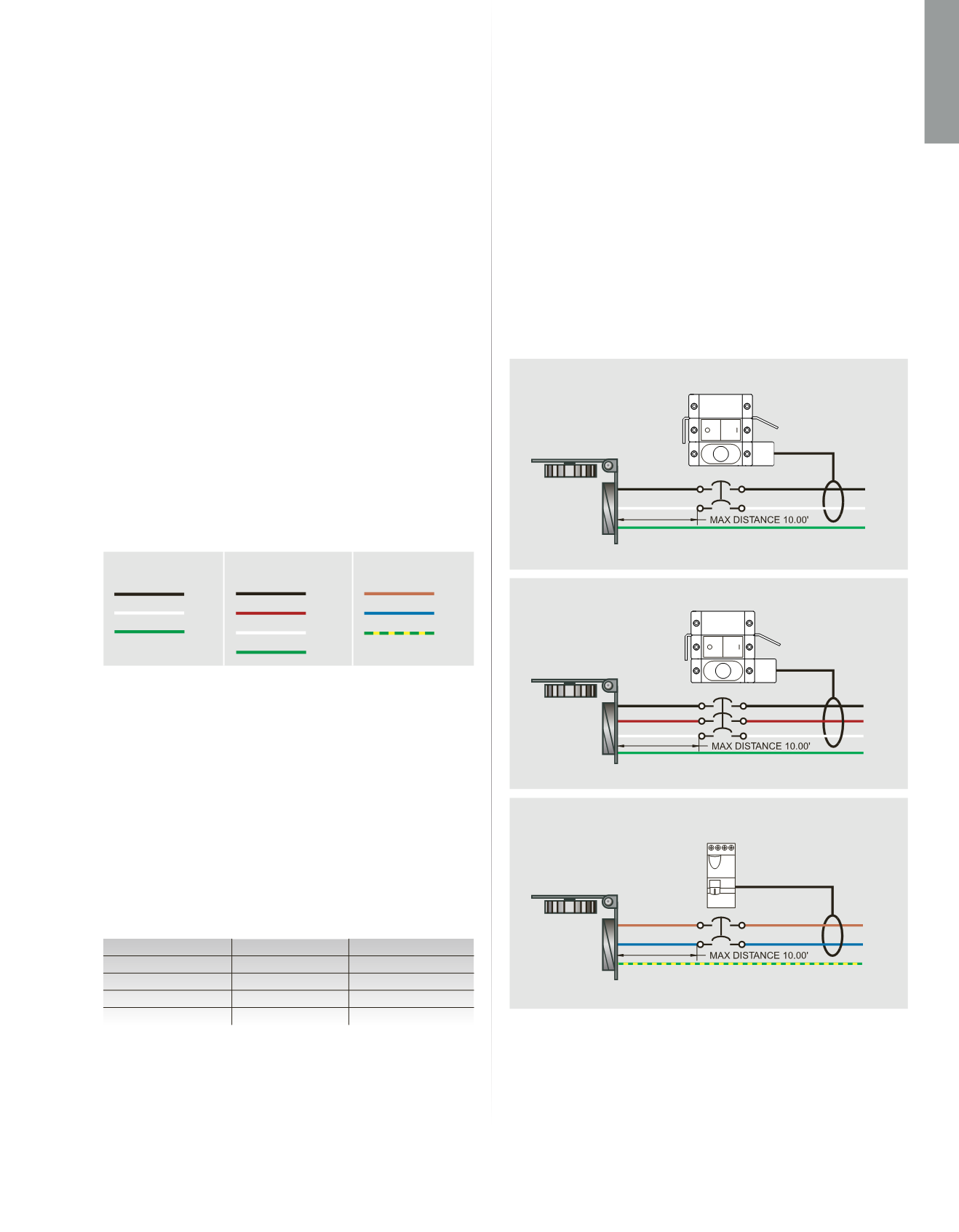

139
A P P E N D I X
TEST
MONTHLY
ELCI
30A
AC Shore Power Source
Main Circuit Breaker
Branch Circuit Breaker
120V - 30A
3,000
3,000
120V - 50A
3,000
3,000
120/240V - 50A
5,000
3,000
240V - 50A
5,000
3,000
120 Volt–60 Hz
ELCI
Circuit
Breaker
3102
120/240 Volt–60 Hz
230 Volt–50 Hz
Hot
Neutral
Ground
120/240 Volt–60 Hz
Ground
Hot 1
Hot 2
Neutral
120 Volt–60 Hz
Hot
Neutral
Ground
AC Main Power Distribution
and Circuit Protection
Purpose
•
Provide a path for delivering power from the ship’s sources of AC
power to the AC branch distribution system
•
Provide a path for returning fault currents to ground via the green
safety ground wire
•
Provide a means for disconnecting AC power when the boat is not
in use or in emergencies
•
Provide electrical separation to insure that two sources of AC
power are never connected
•
Provide circuit protection for neutral and line wires in the
AC main system
•
Provide ground fault protection
•
Provide ELCI overload or leakage fault protection
AC Wire Systems
The three most common AC systems used on boats are shown here.
In all cases the ground, sometimes called safety ground to clarify its
purpose and differentiate it from the DC ground or negative, is said
to be a “normally non-current carrying wire.” Its purpose is to provide
the lowest resistance path for AC currents that have strayed from their
proper containment in the normally current carrying hot and neutral
wires. The ground wire is connected to the
exterior conductive parts of AC devices that could be touched by a
person during normal operation, and it conducts errant AC currents
safely to ground rather than passing them through a human body.
The ground wire is never passed through a circuit breaker.
Devices Qualifying as AC Main Circuit Breakers
In order to qualify as an AC main circuit breaker, these characteristics
must be present:
1.
The circuit breaker must have an Amperage Interrupt Capacity (AIC)
meeting the requirements of the following tables.
2.
The circuit breaker must be multiple pole, usually 2 or 3.
3.
The circuit breaker must be rated for the appropriate AC system
voltage in which it will be used.
4.
The circuit breaker must be available in amperages appropriate to
the design amperage of the system. In the USA, this is generally
30A and 50A, while European systems are generally 16A and 32A.
5.
The ELCI shall have a leakage trip mechanism that trips if current
exceeding 30mA leaks to ground.
Sources of AC power, whether shore power or onboard generators and
inverters, should always have a circuit breaker near the power source.
This circuit breaker is designated the AC main circuit breaker. The AC main
circuit breaker should always have a pole for each of the hot and neutral
wires in the circuit assuring that circuit protection functions are not
compromised in reverse polarity situations.
Beginning in July 2010 ABYC Standards require that an Equipment Leakage
Circuit Interrupter (ELCI) with a 30mA leakage trip be installed in shore
power applications as the first protective device after the power inlet.
ELCIs respond to leakage of electrical current outside of the intended
current path, and provide overload and short circuit protection. They serve
as the main AC circuit breaker for the system. These devices will open all
energized conductors and the neutral when opened manually or tripping on
an overload or leakage fault. For a more complete discussion of ELCIs,
see page 62-63.
ELCI
Circuit
Breaker
3102
TEST
MONTHLY
ELCI
30A
230 Volt–50 Hz
RCBO



















